Types of children's conjunctivitis. Methods of treatment.
Contents
- Children's conjunctivitis in children bacterial, viral, purulent: causes
- Conjunctivitis types
- Video: Children's viral conjunctivitis
- Symptoms of conjunctivitis in children
- What if the temperature with conjunctivitis in children?
- Treatment of conjunctivitis in children at home
- First aid for inflammation of the conjunctiva in toddlers
- Situations when the doctor needs help
- Drops from conjunctivitis for children
- Eye drops Sulfacyl sodium
- Eye drops solution Levomycetin 0.25%
- Eye drops Floxal 0,3%
- Eye drops Tobrex
- Eye drops Ophthalmoferon
- Eye drops Half-dose
- How to instill eye drops?
- Ointments for conjunctivitis for children
- Tetracycline ophthalmic ointment 1%
- Erythromycin ophthalmic ointment
- Zovirax ophthalmic ointment 3%
- Tebrofen ophthalmic ointment 0.5%
- Than to wash conjunctivitis in children?
- How to properly wash the eyes?
- Video: Conjunctivitis in a child - consults Dr. Komarovsky
- Can I walk with conjunctivitis in children?
- When can you walk with the baby?
- Prevention of conjunctivitis in children
- How to protect the child from conjunctivitis?
- How to treat children's conjunctivitis: tips
- Video: Pediatric conjunctivitis: advises Dr. Komarovsky
Why does conjunctivitis occur in children? Symptoms of the disease and features of the course of the disease in children. How to cure children's conjunctivitis?
Conjunctivitis is a disease of the mucous membrane of the eye. In children's practice is found quite often. Symptoms and signs of the disease proceed in different ways: with obvious features and hidden manifestations. In any case: with the slightest suspicion of conjunctivitis, you should consult a doctor and begin treatment of the disease.
 Conjunctivitis is a common disease in children
Conjunctivitis is a common disease in children Children conjunctivitis in children bacterial, viral, purulent: Causes
Types of conjunctivitis
Medicine divides three types of conjunctivitis, depending on the source of the disease:
- viral conjunctivitis
- bacterial conjunctivitis
- allergic conjunctivitis
 Types of conjunctivitis
Types of conjunctivitis Viral conjunctivitis
Viral conjunctivitis occurs when the mucous membrane of the eye is affected by viruses. The disease can manifest suddenly with obvious symptoms: swelling and redness of the eyes, itching and burning of the eyelids. There is a secretion of pus.
IMPORTANT: Viral conjunctivitis passes independently in the development of immunity to this pathogen. The formation of a protective reaction, as a rule, occurs on the 5th-7th day of the disease.
Typically, viral conjunctivitis does not have specific treatment, but only needs symptomatic relief.
- Regular hygiene will help alleviate the child's condition: reduce itching and inflammation. Eyes should be washed with saline solution of sodium chloride, decoction of chamomile, freshly infused tea. For each eye, different cotton swabs or gauze wipes are used.
- . If the condition of the baby does not improve with the correct eye toilet, and the bacterial infection is connected to a bacterial infection, the doctor may prescribe an antibacterial eye drop
- In cases of complaints of dryness and burning sensation in the eyes, the doctor may prescribe moisturizing drops
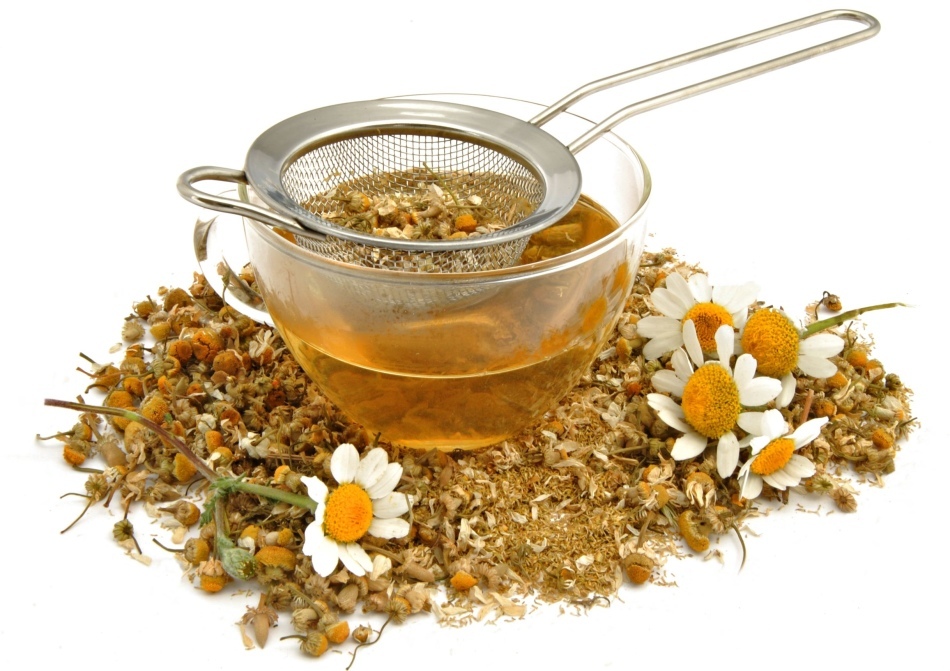 Infusionchamomile for eye rinse
Infusionchamomile for eye rinse Consider variants of viral conjunctivitis requiring compulsory medical intervention and special treatment.
Adenoviral Conjunctivitis
- The disease causes adenovirus, which is transmitted by airborne droplets. At the kid the temperature sharply raises to 39 degrees, there is a fever, a headache and the throat inflames. Noticeably an increase in the submandibular lymph nodes
- Usually one eye is affected first, after three days the disease goes to the second eye. Swollen eyelids, reddens the mucous membrane of the eyelid. There are insignificant discharge of a grayish hue. Sometimes there are small hemorrhages within the conjunctiva. The child is afraid of light, he has watery eyes
- A characteristic feature of adenoviral conjunctivitis is the presence of small membranes that separate and small vesicles on the internal mucosa of the eyelid.
 Itching of the eye is a characteristic symptom of conjunctivitis
Itching of the eye is a characteristic symptom of conjunctivitis Herpetic conjunctivitis
- The causative agent - herpes simplex virus penetrates the child's air-by a drip or by a contact method from a sick person. With weakened immunity, the virus can show activity and cause damage to the mucous membranes of the baby's organs, including the conjunctiva of the eye.
- . The child begins to behave restlessly: there is itching, fear of light, lacrimation, swelling and redness of the eyelid. Watery blisters of herpes pour out on the mucous membrane. In some cases, the temperature rises, the baby weakens and the capricious
IMPORTANT: Herpetic conjunctivitis requires mandatory treatment with antiviral medications prescribed by the doctor.
Video: Children's viral conjunctivitis
Bacterial conjunctivitis
Different microorganisms can cause bacterial conjunctivitis in children. Let us consider some types of clinical manifestation of this type of disease by different pathogens.
Acute bacterial conjunctivitis
- The disease is caused by a lesion of the conjunctival eye bag by a group of pathogens: streptococci and staphylococci
- . Children with a weak immune system and chronic illnesses are the first to suffer.
- Infections are susceptible to children of children's institutions: schools, kindergartens. The disease is carried by airborne or in contact with sick children
- The disease occurs suddenly and begins with the inflammation of one eye. Then the second eye
- is affected. At first the child experiences discomfort and itchy eyelids, then the conjunctiva swells and turns red. The surface of the mucous membrane acquires unevenness, even individual scleral hemorrhages are possible. Pus is released, which withers and glues the eyelids
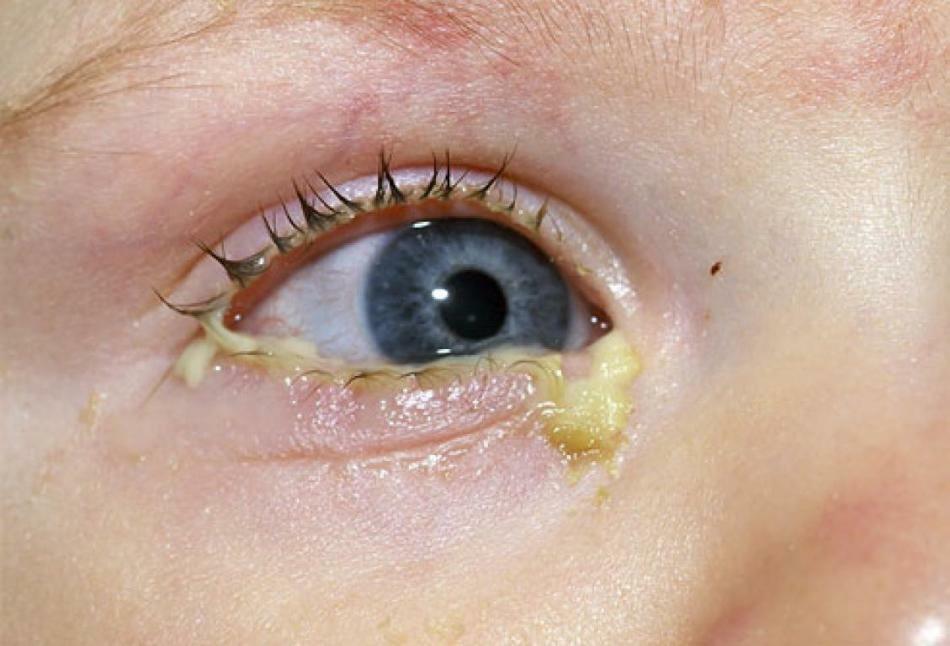 to the morning. Bacterial infection of the eye
to the morning. Bacterial infection of the eye Blenocoenal conjunctivitis
The disease is caused by microorganisms - gonococci. A newborn baby can catch an infection at birth from a sick mother. There are cases of intrauterine infection of a child from an infected mother. There is also a contact transmission of the disease through the contaminated hands of the patient when caring for the child.
. The eyes of the crumb become infected 2-3 days after they are born. Swiftly swollen eyelids and are painted in a purplish-red color. First there are copious spotting. Approximately on the third day of the disease, yellow-green pus is secreted. These secretions are very dangerous for the baby. The infection can go to the cornea of the eye and further influence the vision of the child.
IMPORTANT: In maternity hospitals, a solution of sodium sulfacyl is instilled in all newborns to prevent gonorrhea.
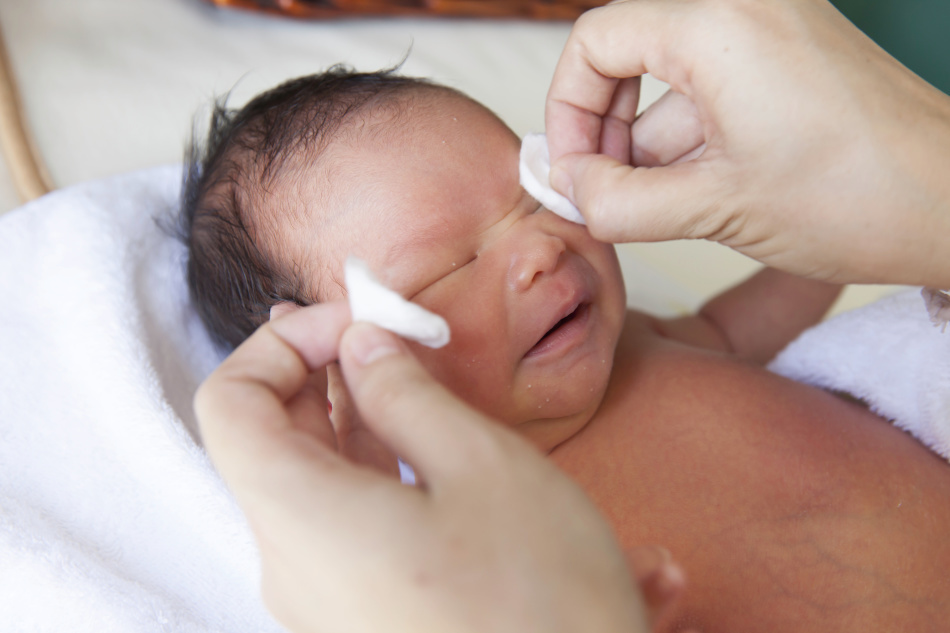 Hygienic procedures and instillation of sodium sulfacyl - mandatory prevention of gonoblenorei of newborns
Hygienic procedures and instillation of sodium sulfacyl - mandatory prevention of gonoblenorei of newborns Pneumococcal conjunctivitis
- Breastfeeding is the category of children most prone to this kind of conjunctivitis. Infection occurs by airborne droplets and through contact through infected hands, toys, various items. Pneumococci are germs that cause disease
- Symptoms of the manifestation of the disease are similar with other types of bacterial conjunctivitis. This: tearing, swelling and redness of the eyes, secretion of pus and mucus
IMPORTANT: A characteristic feature of pneumococcal conjunctivitis is the appearance of numerous films. They easily exfoliate from the conjunctiva of the eye.
 Microorganisms
Microorganisms Diphtheria conjunctivitis
- The disease is transmitted by airborne droplets in a short period of time. The most often sick children before the year
- During the illness, it is possible to increase the temperature to 38-39 degrees. The child becomes sluggish, capricious. The kid has enlarged submandibular lymph nodes, there is swelling and redness of the eyes. Later, there are dull spotting. The mucous membrane is closed with tight membranes that are difficult to remove.
- Diphtheria conjunctivitis is a dangerous disease. If suspected of a disease, the baby is isolated in a special box of the infectious disease department of the medical institution. Diphtheria conjunctivitis is contagious and requires compulsory therapy
- In neglected cases, the disease can affect the cornea of the eye and cause a complication associated with lens opacity and loss of vision
Chlamydial conjunctivitis
- The disease is spread by parasitic bacteria of chlamydia. If the future mother has chlamydia, then after birth, the child receives mandatory preventive care in the form of eye ointments with antibiotics
- Babies can catch chlamydial conjunctivitis through water, swimming in infected reservoirs and pools
- The disease most often affects both eyes
- The disease is characterized by redness and swelling of the eyelid, purulent secretions. From the side of the infected eye, it is possible to increase the
- capillary lymph node. When diagnosing chlamydial conjunctivitis, the child needs the advice of other pediatricians, since it is possible to infect other parts of the baby.
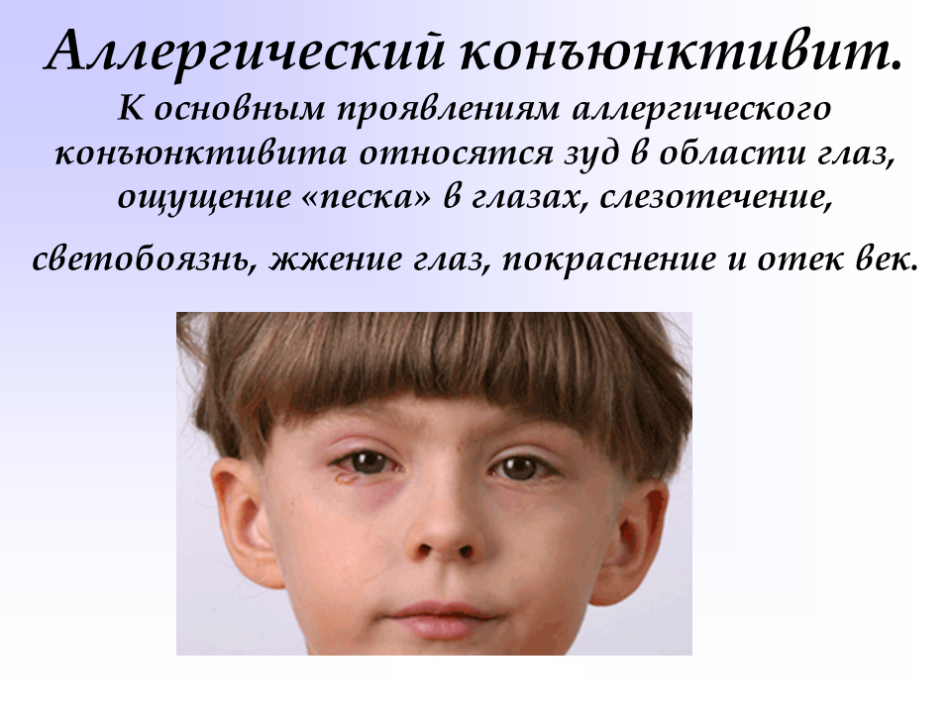 Allergic eye inflammation
Allergic eye inflammation Allergic conjunctivitis
The presence of a certain group of allergens can cause allergic conjunctivitis. The disease is characterized by puffiness and redness of the eyelids, there is a strong itch and excessive burning sensation in the eyes, there is abundant lacrimation.
IMPORTANT: Detection of allergen and its elimination is a top priority in the treatment of allergic conjunctivitis.
Treatment of allergic conjunctivitis reduces to the use of hormonal and antihistamines, which are prescribed by the attending physician.
Symptoms of conjunctivitis in children
All types of inflammation of the conjunctiva have similar symptoms. Parents should suspect the onset of the disease with the following symptoms:
- eye sore
- eyelid swelling
- redness of the eye
- puffiness
- increased lacrimation
- itching of the eye
- excretion of pus
- clumping of eyelashes after awakening
At the onset of the illness, the toddler is intensely rubbing the eyelids. He is irritated by bright illumination: the baby has a fear of light and begins to contract involuntarily eyelids( blepharospasm).
IMPORTANT: In case of severe manifestations of conjunctivitis, the child should be shown to the pediatrician. Proper treatment of the disease will reduce the risk of inflammation of other parts of the eye and impair vision.
 Child's malaise
Child's malaise What if my baby's conjunctivitis temperature?
- Quite often the appearance of conjunctivitis is a warning about the development of an infectious disease. You should pay attention to the complaints of the baby.
- It is recommended to measure body temperature, examine throat, lymph nodes. It is necessary to closely monitor the dynamics of the course of the disease.
- Increased temperature can accompany infection in the eyes. It should be remembered that antipyretics are given to children only at a temperature above 38 degrees. The increase in temperature promotes the development of interferon and the enhancement of the immune mechanism of the child.
- It is recommended to strengthen the drinking regime and pay attention to the toilet eyes: carefully rinse and remove the pores of pus.
IMPORTANT: Elevated temperature and initial symptoms of conjunctivitis are the reason for compulsory medical examination of babies for up to a year.
 Removal of crusts with conjunctivitis
Removal of crusts with conjunctivitis Treatment of conjunctivitis in children at home
First aid for inflammation of the conjunctiva in toddlers
The kid should be helped with the first symptoms of eye inflammation before going to the doctor.
- A thorough eye toilet with a lavage will help alleviate the condition of the baby and prevent the spread of the infection to other parts of the eye.
- If conjunctivitis is accompanied by fever, chills, sore throat, coughing, shortness of breath, the baby should be shown to the doctor.
- Child with conjunctivitis is recommended to protect from visiting children's institutions and walking in cold air and windy weather.
- Before visiting a doctor, the child should clear his eyes of purulent accumulations and crusts.
IMPORTANT: It is not recommended to instill any drops of the baby on your own without the doctor's prescription. This can distort the picture of the true cause of conjunctivitis and make it difficult to identify the causative agent of the infection.
 Young children in need of medical supervision
Young children in need of medical supervision Situations when a doctor needs help
- Young children( up to a year) require compulsory consultation if they have eye problems
- If signs of conjunctivitis continue for more than two days
- Photophobia is a symptom requiring a prompt medical attention
- Pain in the eyes
- Deterioration of vision
- The appearance of bubbles on the eyelid. This may indicate a lesion of the eye mucosa with the herpes simplex virus
IMPORTANT: Only a doctor can determine the type of conjunctivitis. Each type of disease corresponds to a specific scheme of treatment and choice of medications.
Drops from conjunctivitis for children
 Drugs for the treatment of conjunctivitis
Drugs for the treatment of conjunctivitis IMPORTANT: The administration of drops to treat the disease is determined by the doctor, based on the type of pathogen, the severity of the disease and the age of the child.
Eye drops Sulfacyl-sodium
Antibacterial sulfanilamide preparation. It is also known as Albucid. Used to treat bacterial and viral infections of the eyes with streptococci, gonococci, pneumococci, chlamydia.
Solutions of different concentrations are used: 10%, 20% and 30%.The medicine is instilled in 1-2 drops in the conjunctival sac 4-6 times a day.
Sulfacil-sodium is used for mandatory prevention of blenearitis in newborns in maternity hospitals immediately after the birth of a child.
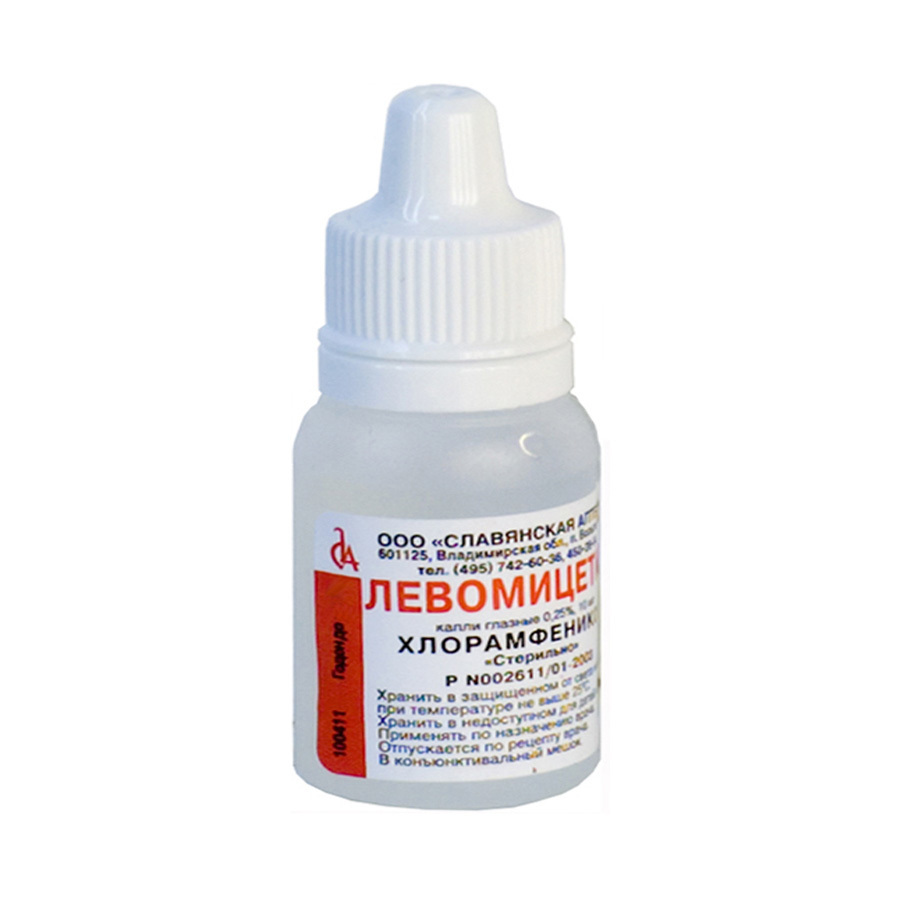 Solution of Levomycetin 0.25%
Solution of Levomycetin 0.25% Eye drops solution of Levomycetin 0.25%
An antibiotic that has a bactericidal effect on many types of microorganisms. Used in the form of eye drops with bacterial conjunctivitis.
The drug is instilled in 1 drop in both eyes 3 times a day. The usual course of treatment is about 14 days.
Eye drops Phloxal 0.3%
Bactericidal eye drops containing the antibiotic ofloxacin. The drug is prescribed by a doctor with various bacterial conjunctivitis of the eyes. Usually prescribed 1 drop 2-4 times a day for two weeks
Eye drops Tobrex
Eye drops with active antibiotic substance - tobramycin. The medicine is instilled in 1-2 drops every four hours. Tobrex is used for various bacterial infections of the eyes.
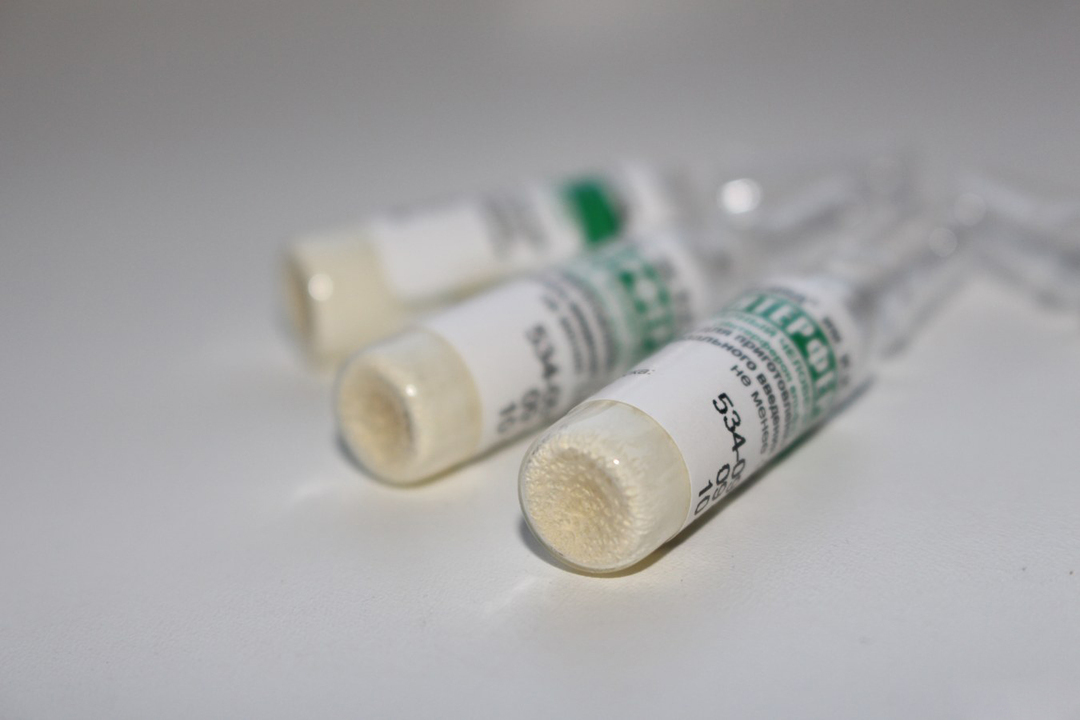 Eye Care
Eye Care Eye Drops Ophthalmoferon
A drug containing an active substance - interferon. Drops are prescribed by the doctor in the case of a viral etiology of conjunctivitis. Ophthalmoferon causes the death of viruses, removes swelling, itching, has anti-allergic effect.
The drug can be given to babies from the first days of life. Usually, the doctor prescribes the medicine in a dosage: 1-2 drops in the conjunctival sac 6-8 times a day.
Eye drops Mid-dose
- The preparation contains an antiviral complex of polyribonucleotide complexes. The drug is effective for the suppression of herpes and adenoviruses. Possible simultaneous treatment with antimicrobial drugs
- Poludan diluted with water for injection according to the instructions. Divorced medication should be stored in a cool place until day
- Eye drops prescribe 1 -2 drops 6-8 times a day. The duration of the course of treatment is set by the doctor
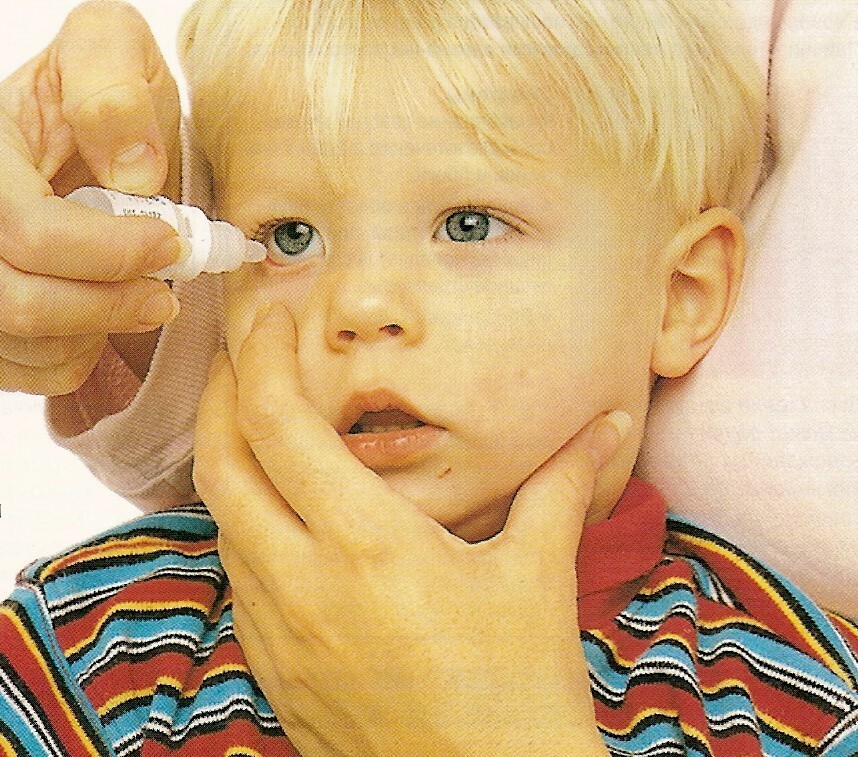 Babe is burying his eyes
Babe is burying his eyes How to properly instill eye drops?
- Before starting the procedure, you should thoroughly wash your hands with running water using
- soap. For instillation, it is advisable to use disposable eye droppers or droppers on
- bottles. During the procedure, pipette contact to the eyelid surface should be avoided
- Eye drops should be at room temperature before instillation. Do not bury the medicine directly from the refrigerator
- Bury both eyes, even if one is healthy. This preventive measure prevents infection from penetrating into the healthy eye
- Before instillation, draw the lower eyelid and squeeze the right amount of drops from the dropper or pipette into the lower conjunctival sac of the eye
- After the procedure, it is possible to blink the child for even distribution of the drug
Ointments for conjunctivitis for children
In the treatment of conjunctivitisophthalmic ointments are prescribed. Often, doctors combine treatment with drops and ointments.
IMPORTANT: As a rule, children do not like and do not tolerate eye ointments. It is best to perform this procedure before the baby sleeps.
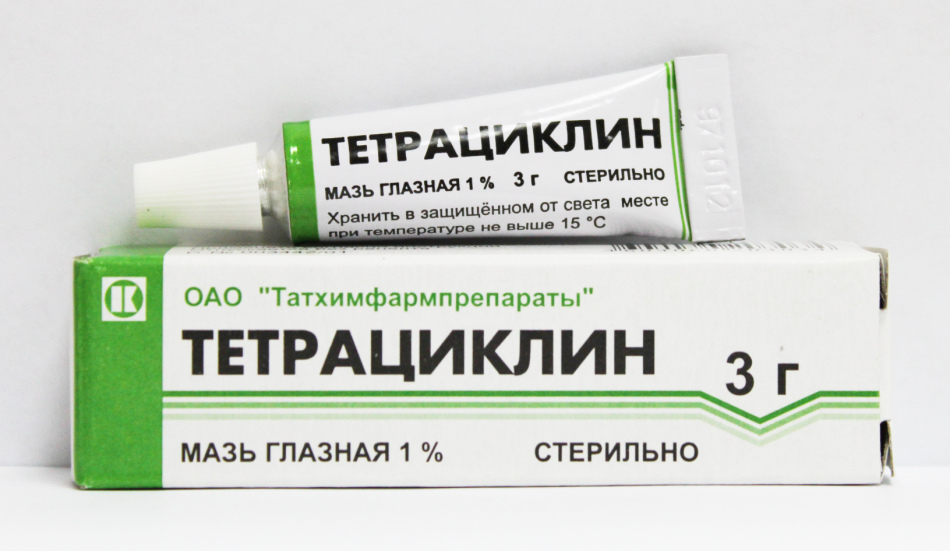 Tetracycline ophthalmic ointment 1%
Tetracycline ophthalmic ointment 1% Tetracycline ophthalmic ointment 1%
Ointment contains an antibiotic tetracycline. The drug is applied by pawning the eyelid 2-3 times a day as prescribed by the doctor. Ointment is used for bacterial infections of the eyes.
Erythromycin ointment
Eye ointment of bactericidal action with active substance erythromycin. It is widely used in ophthalmic practice in the treatment of eye infections. Ointment is placed in the lower eyelid three times a day.
Zovirax ophthalmic ointment 3%
Antiviral eye ointment containing acyclovir. It is used in the treatment of viral eye infections, in particular herpetic conjunctivitis. Ointment is poured over the lower eyelid 5 times a day every four hours.
Tebrofen Ophthalmic Ointment 0.5%
Antiviral ointment with active substance tebrofen. The drug is used for viral eye diseases. Ointment is placed behind the eyelid 3-4 times a day. Treatment lasts usually up to 2-4 weeks.
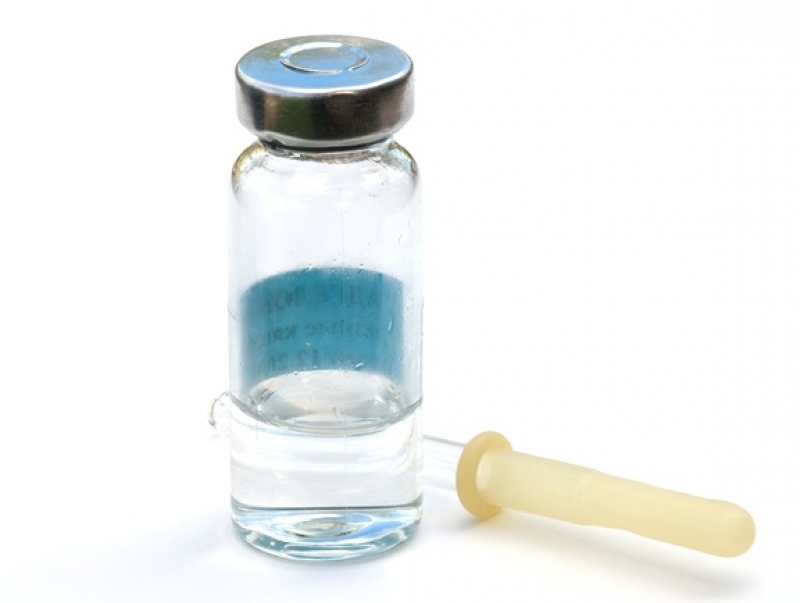 Eye Wash Solution
Eye Wash Solution Than to wash conjunctivitis in children?
Washing the eyes and removing purulent crusts and mucus is an important procedure in the treatment of conjunctivitis.
IMPORTANT: Before burying eye drops and putting ointment on the eyelid, you should thoroughly clean and rinse your eyes.
In the presence of mucopurulent discharge and crusts, the eyes should be washed with solutions and infusions that can be prepared at home on their own.
- Boiled warm water - well removes eye purulent discharge
- Saline : in a liter of warm boiled water dissolve a teaspoon of table salt
- Furacilin solution 0.02% : in 100 ml of boiling water, one tablet of furacilin is dissolved 0.02 g
- Chamomileinfusion : two tablespoons of chamomile flowers are steamed with a glass of boiling water, insist 40 minutes
- Sage infusion : a tablespoon of sage leaves is steamed with a glass of boiling water
- Tea infusion : a tea bag is poured into a stackth of boiling water and insist 10 minutes
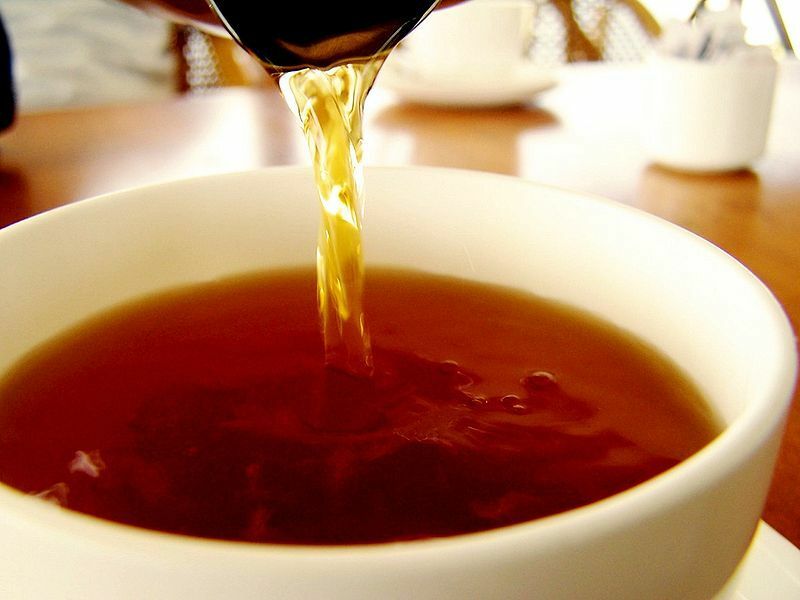 Tea eyewash
Tea eyewash How to wash your eyes right?
- Inflamed eyes are washed with a warm solution with a cotton swab or a disc. For each eye, take a new tampon
- A wetted tampon is from the outer edge of the eye to the inner corner of the
- . The eye wash procedure is performed several times a day as needed( 6-8 times per day).
Video: Conjunctivitis in a child - advises Dr. Komarovsky
Canwalking with conjunctivitis in children?
To walk or sit at home with conjunctivitis - there is no definite answer. It should take into account the child's well-being, the duration of the disease, weather factors.
When can you walk with the baby?
- In the absence of temperature and well-being of the child
- There is no acute period of illness
- Under favorable weather conditions: the street is not dusty, there is no strong wind, there is a non-hot weather. In winter - in the absence of severe frosts
For walks you should choose green areas: parks, enclosed yards and areas without a crowd of people. Since conjunctivitis is a contagious disease, it is recommended that the sick child be isolated from contact with healthy children.
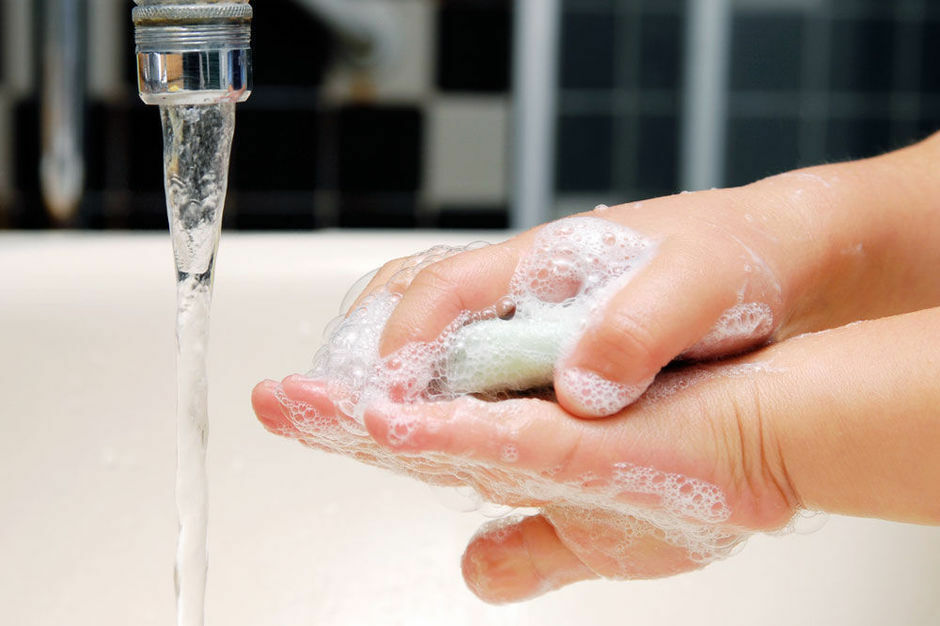 Conjunctivitis prophylaxis
Conjunctivitis prophylaxis Prevention of conjunctivitis in children
Conjunctivitis is a disease associated with eye infection. Due to childhood, sufficiently weak immune system of the child, lack of proper hygiene - the disease occurs in children often. Therefore, preventive measures should be taken to prevent the occurrence of children's conjunctivitis.
How to protect the child from conjunctivitis?
- Observe the hygiene of the child: wash hands after walking, before eating
- For allergic conjunctivitis, remove the allergen that causes the disease: house dust, animal hair, pollen of flowering plants.
- Maintain cleanliness in the apartment: conduct wet cleaning of rooms, remove dust, ventilate the room.
- Hold hardening and wellness activities with a baby to strengthen the immune system
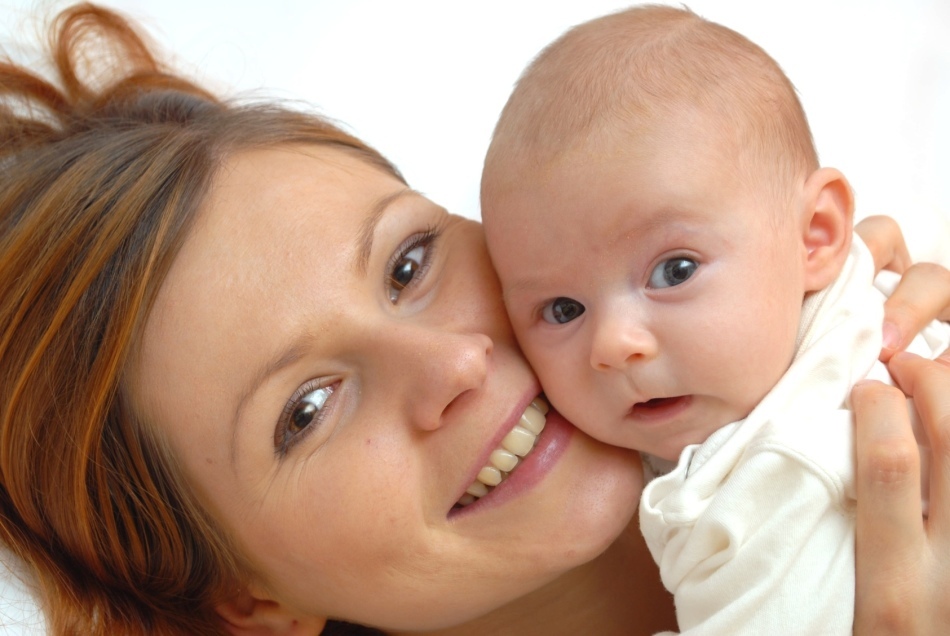 Healthy baby
Healthy baby How to treat children's conjunctivitis: tips
Inflammatory process of the mucosathe surface of the eye is very worried about the parents. Almost every child at least once, or even several, faced this problem. Numerous reviews on the Internet concerning conjunctivitis can be generalized and give some useful advice.
- Prophylactic measures against conjunctivitis are the most effective and help to reduce the risk of
- . The child should be protected from the possibility of injury to the conjunctiva: eye contact with cosmetics, dust, chemical reagents.
- . Monitor the child's time near the TV and computer. With long-term "communication" with these information and gaming devices, the process of self-cleaning of the eye can decrease, which is a prerequisite for inflammation of the mucous membrane of
- . Proper and healthy nutrition, adequate sleep and outdoor walks, personal hygiene and physical development are the main components of a child's health.
